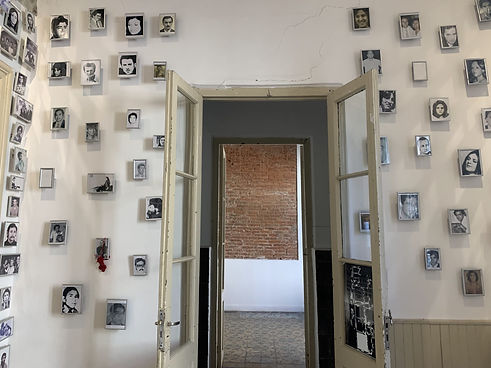
In Córdoba, I had the opportunity to intern at a public urgent care center adjacent to Blas Pascal University. The clinic consisted of a "dispensario", or primary care clinic, and an urgent care center in one single building. I worked on the side of the urgent care center and was thus exposed to many of the harsh realities and health challenges facing the residents of the Argüello neighborhood, the population to which the clinic catered. Writing this paper allowed me to connect my experiences at El Hospital de Pronta Atencíon Cura Brochero to the larger fragmentation and inefficiency issues plaguing the Argentine public health system today.
Ultimately, my experience at El Hospital de Pronta Atención confirmed my suspicion that my calling does not lie in medicine, but rather in community health and social justice work. In spite of the medical focus of my internship, I was able to treat the position like a sociological investigation into how the social determinants of health impacted the Argüello neighborhood and learn a great deal about the important role of public clinics in primary care.
El Hospital de Pronta Atención Cura Brochero
El Archivo Provincial de la Memoria de Córdoba
El Archivo Provincial de la Memoria lies within what was a former clandestine detention center during the last military dictatorship in Argentina from 1976-1983. During that nearly 7 year period, experts estimated that more than 30,000 people were forcibly disappeard. Men and women of all ages, even mothers-to-be, were taken from the streets in broad daylight, their homes in the dead of night, their universities, and their workplaces. People were taken for studying philosophy, having books, being members of a leftist political group, asking too many questions in class, or, just because. Nowhere was safe. This building served frequently served as a transitory prison and torture center for disappeared individuals, who were often transferred from El Archivo to La Perla (a larger site outside of Córdoba Capital), or even ESMA in Buenos Aires. The cracked walls are decorated with the pictures of Cordobeses who never returned home, and families regularly update scrapbooks in honor of the lives of their loved ones for public viewing.
Volunteering at El Archivo weekly, I worked alongside high school students preparing for a Memory Day Festival, helping them navigate the weight of this history and shape how it is taught to others. Seeing them process these stories reminded me that education itself is an act of resistance—an assertion that history must be acknowledged, that justice is incomplete without memory.
El Archivo also serves as a center for social justice. I attended a conversation with families of victims of police violence across Argentina, witnessing how historical patterns of state violence persist. These discussions reinforced a truth that is central to what I hope will be my life's my work in migration policy: injustice doesn’t end, it transforms. The legacies of repression continue to shape displacement, asylum, and equity today.
This experience deepened my understanding of how history fuels advocacy. Policy cannot exist without memory—without reckoning with past injustices that continue to ripple through time. The names on those walls are reminders that truth must be protected, that history must be used to shape justice.
